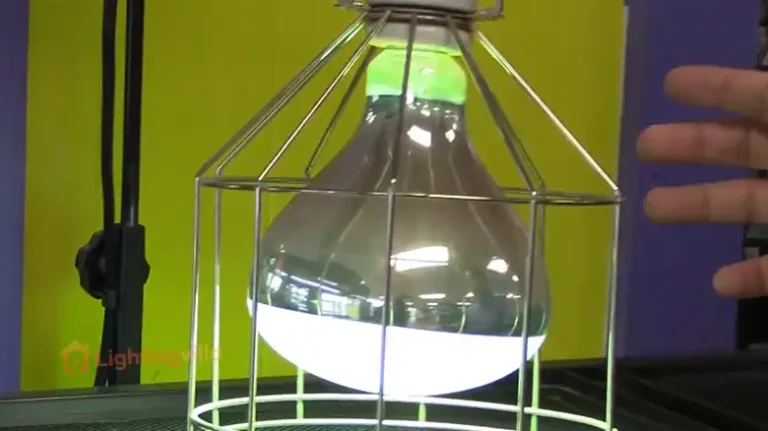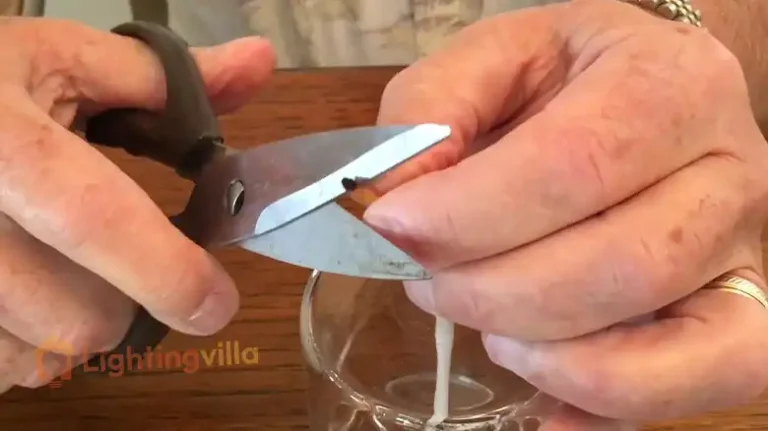What Gauge Wire For Outdoor Lamp Post | Selecting Guide
Whereas most people will take their time deciding which lights to add to their outdoor arrangement and carefully choosing the right transformer, it’s also important to choose the right wiring for your arrangement. Your outdoor lighting cable or gauge will depend on how much wire you can install and how many bulbs you can install without a voltage loss.

The lights may function differently; as a result, flickering or shine faintly. 12/2 cable gauge is the most typical size for outdoor lamp post lighting. However, you might want a thicker wire, like 10/2, if you’re putting additional lights in series or extending cables over longer distances. This will stop voltage loss from having an impact on your lighting.
What is Wire Gauge?
Lower gauge numbers denote larger-diameter wires, and the gauge of a current-carrying wire is a measurement of its cross-sectional length. This is because the initial technique of determining wire diameter was pulling wires through a hole that an electrician had pressed, and the thinner the wire, the fewer strands could be bundled to fit.
In a normal home, the wires that power the outlets and lighting fixtures are either 12- or thinner 14-gauge, and the wires in lamp cables are even thinner, 18-gauge. Outdoor light posts often carry non-stranded wire, a wire composed of multiple large filaments, just as ordinary cables in a home’s electrical system.
Selecting Gauge Wire for Outdoor Lamp Post
To know what gauge wire for an outdoor lamp post is necessary, you need to have a proper understanding of many things. In the following article, we would like to discuss this topic thoroughly. As to know the gauge wire for outdoor lamp posts, you need to know about:
Wire Gauges and Wire Sizing
Most domestic wiring is 12- or 14-gauge wire, such as that used in many Outdoor lighting fixtures and for many devices in outlets. The gauge will be shown as a number, a dash, and then another number:
- 12-2 or 12/2
- 14-3 or 14/3
The first digit indicates the wire’s diameter. The second number represents how many wires are present in a cable. Cables are collections of wires that are often covered in plastic insulation. Cutaways of cables are frequently seen to display the number of wires within and the exterior insulation color.
Ground wires are frequently added as a G or a WG to wire gauge and size references, as in the following: The 14-gauge wire shown as 12-3WG or 12-3G has two insulated wires (live/neutral) and a ground.
A single solid conductor (copper) encased in insulation makes up a solid core wire, which is a component of most of lighting’s hardwired lighting fixtures. If you’re unfamiliar with electrical wiring, you might be curious about the various insulated wiring colors and labeling.
Wire Color Coding
The shade of the coating or sheath that covers the wires is yet another form of wiring regulation. Whatever is carried on the wire is indicated by the insulation color presented:
- The color black denotes the live or hot wire. Sometimes, red is used in place of black.
- This white wire serves as your neutral. In some cases, brown is used in place of white.
- Your ground wire should be green or green/yellow or bare copper.
Keep in mind that you and even neutral wires conduct electricity. Before working on any electrical projects, always switch off your breaker and light switch.
Electrical Wire Labeling
When you purchase electrical wire in mass, the wire sheath will have information about the wire (wire type, wire size/gauge, kind of coating on electrical conductors, voltage ratings). It will include the gauge measurement format (12-2, etc.) and indicators of voltage rating. Additionally, the label will specify the type of wire, such as CU for copper or AL for aluminum.
In addition to the information about the wire gauge that is imprinted on the sheath, further data is available. UL stands for an Underwriters Laboratories (UL) grade. NM- markings identify non-metallic cables.
Long Wire Runs and Hardwiring
You normally require big gauge wire for 50 feet or more since long wire runs might create lower voltage the farther you are from the transformer. Your low-power lighting system must be designed with balanced lines connected to the right loads.
You may wish to use a 12- or 10-gauge wire for voltage level lighting in lengthy wire runs, such as outdoor lamp posts, to reduce voltage loss. In that, it works with current, plumbing, and electricity that are similar. If you look at a sprinkler system, you will observe that you cannot place many sprinkler heads on a single line to maintain water pressure. Electricity is no different.
Adding too many lamps to one circuit may negatively impact your power flow, or each light may not receive adequate voltage. This is why it’s crucial to plan your wiring, check the voltage on current lines using a voltmeter, and speak with a licensed electrician.
14/2 vs 12/2 Gauge Wire
Because 14/2 landscape wire is narrower than 12/2, it is less expensive but less powerful and less effective over extended distances.
Because it strikes a compromise between price and function, 12/2 is the most widely used option for landscape wiring. You’ll see less voltage drop, and it works for outdoor lamp post systems, up to 240 Watts as opposed to 192 Watts for 14/2.
Frequently Asked Questions
How to wire an outdoor post light?
Contrary to popular belief, mounting an outdoor post lamp is straightforward. You can put the post and run the cable yourself, but you’ll need to hire a certified electrician to connect the wire to the main box and add a switch. the following steps:
Step 1: Prepare the trench and posthole
Step 2: Install the PVC (Polyvinyl chloride) conduit
Step 3: Pour concrete into the posthole.
Step 4: Put the post into the concrete foundation.
Step 5: Assemble the lamppost.
Step 6: Properly brace the lamppost.
Step 7: Make the electrical connection.
How tall should a residential lamp post be?
A typical residential post should rise roughly 6 feet off the ground, and the light at the top should add another 2 feet, making the fixture’s overall height about 8 feet.
How do I add an electrical outlet to a lamppost?
Although we haven’t tried it ourselves, it’s possible with a qualified electrician’s assistance and a small alteration to the post.
A fine-tooth saw, or you may readily use a standard utility knife to produce an outlet aperture in the post’s construction material; you may use a fine-tooth saw or a standard utility knife rather readily.
Given that this portion of the post measures around 9.5″ in width by 6.5″ in height and that there is roughly 3.5″ of available space per each side of the aluminum pipe inside the post, the foundation of the post has enough space to accommodate a typical small outdoor outlet. You should contact your neighborhood electrician with any queries about the installation or wiring of the outlet.
Final Words
The most important factor in choosing a wire gauge is always a voltage drop, even though cost and power rating will also matter. Particularly if you’re doing a circuit longer than 50 ft, due to the lengthy distance, your lights may fade or flicker, ruining the overall impression.
Fortunately, the method above makes it simple to figure it out before laying any wires, saving you from digging everything up for a test run. What wire gauge did you choose for your outdoor lamp post, if you already have one?






